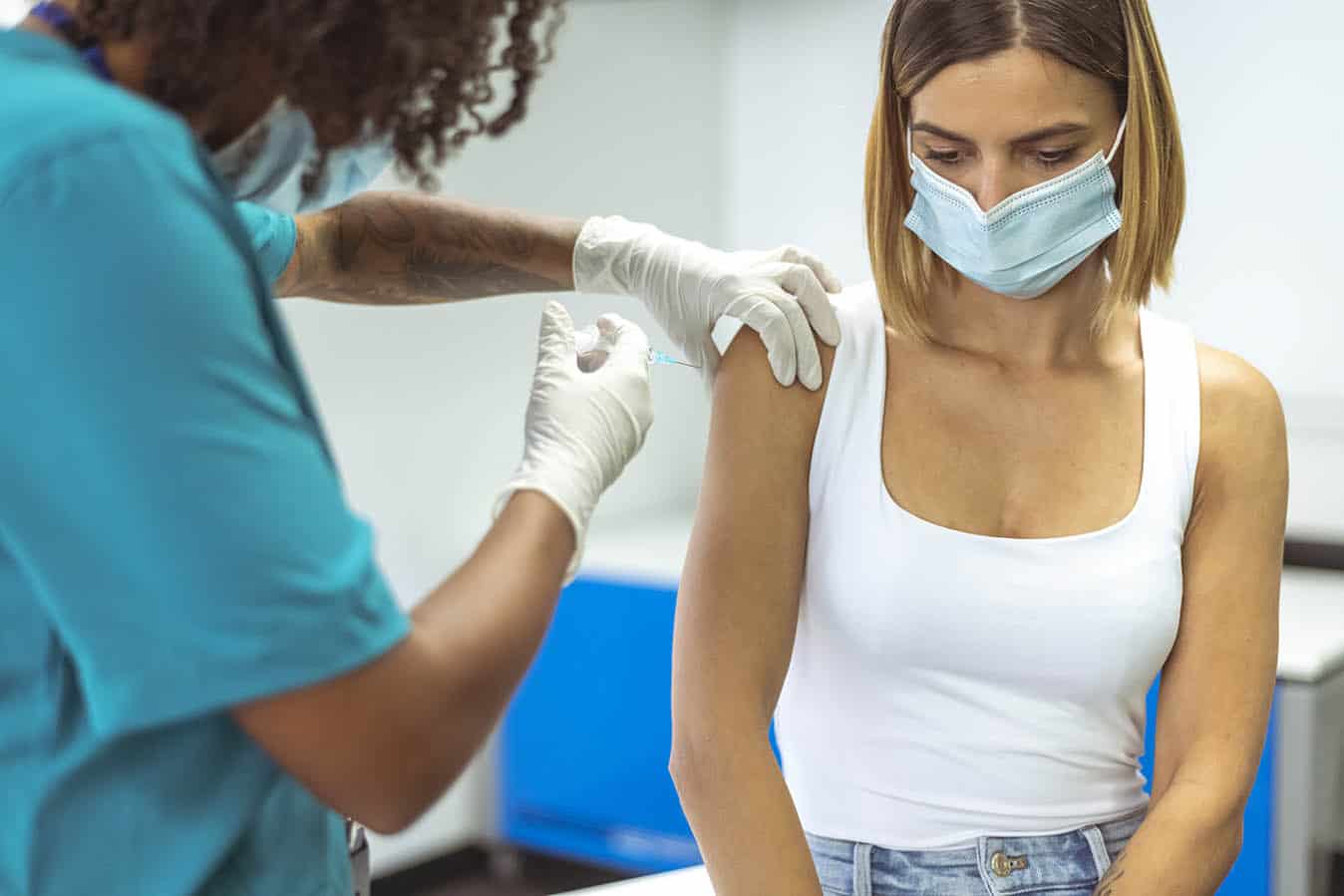The SARS-CoV-2/COVID-19 pandemic has revealed that healthcare systems operate with strictly limited resources, workforce constraints, and variable accessibility.1,2
Throughout the pandemic, we have witnessed health sectors of entire countries, both developing and advanced, brought to the brink of collapse.3
We now face this situation in Australia with New South Wales struggling to cope with growing case numbers and even South Australia grappling with a continuous crisis of hospital ‘ramping’ as paramedics struggle to cope even without COVID-19.
While an overwhelmed health system is not an unavoidable outcome of the pandemic, and could certainly have been foreseen based on past experience, the likelihood of it occurring appears to increase where timely, decisive policy decisions, effective and adequately funded public health and social measures, and citizen trust and adherence are poorer.4
As well as saving lives and reducing illness, a principal aim of the COVID-19 vaccination program and range of public health measures and social restrictions is to prevent or minimise the risk of overwhelming health systems.
Here, as we have seen abroad, would be where otherwise readily treatable conditions or injuries,5 even childbirth,6 may become harder to safely and effectively manage due to staff, space, and resource shortages. Here is where doctors, nurses, and midwives must make heart-wrenching choices regarding who can be saved and who cannot.
It is distressing to see that with these obvious and significant impacts, opponents to vaccines and social restrictions mobilise campaigns presumably to undermine public confidence and willingness to participate in attempts to combat the pandemic.7
One argument that often appears to be put forward against vaccination is that COVID-19 vaccines do not completely prevent illness and death.
Here, vaccination opponents focus on reports of hospitalisations, intensive care unit admissions, and deaths of vaccinated individuals with little regard to the fact that most reports contain neither information about why patients were admitted in the first place nor the causes of death.8 Further, with rising vaccination rates and the fact that COVID-19 vaccinations reduce risk but do not completely prevent infection, it is understandable that an increasing proportion of vaccinated individuals would present with a range of issues while also positive for COVID-19.
Reports of COVID-19 and all-cause mortality reveals that all-cause related deaths appear to climb, corresponding to COVID-19 related deaths.9,10 These findings are unsurprising. Strained health systems struggling to cope with unmanageable numbers of presentations and admissions while attempting to implement effective respiratory protection programs for all patients and visitors in a context of:
- limited resources;
- lower staffing levels due to ill-health and absence; and
- high levels of stress and burnout simply cannot provide the necessary care and treatment that patients need.
Vaccination, public health measures, and social restrictions cannot and will not completely protect every person from the risks of infection, illness, hospital admission, or death.
What these interventions do, however, is quite significantly and practically reduce the risk and frequency of these events occurring. This gives health systems and the staff working within them the breathing room they need to care for people who present with COVID-19-related illnesses and those presenting with a range of other completely unrelated illnesses and injuries.
Unless our health and aged care systems are significantly and comprehensively improved, then vaccination and social restrictions will be necessary to protect our community not just from COVID-19 itself, but from the risks of harm and death from all other causes.
References
- Dorsett M. Point of no return: COVID-19 and the US healthcare system: An emergency physician’s perspective. Science Advances 2020; 6(26): eabc5354.
- Banda Chitsamatanga B, Malinga W. ‘A tale of two paradoxes in response to COVID-19’: Public health system and socio-economic implications of the pandemic in South Africa and Zimbabwe. Cogent Social Sciences. 2021; 7(1): 1869368.
- Romani G, Dal Mas F, Massaro M, et al. Population health strategies to support hospital and intensive care unit resiliency during the COVID-19 pandemic: The Italian experience. Popul Health Manage. 2020; 24(2): 174-81.
- Tangcharoensathien V, Bassett MT, Meng Q, Mills A. Are overwhelmed health systems an inevitable consequence of covid-19? Experiences from China, Thailand, and New York State. BMJ. 2021; 372: n83.
- Mulholland RH, Wood R, Stagg HR, et al. Impact of COVID-19 on accident and emergency attendances and emergency and planned hospital admissions in Scotland: an interrupted time-series analysis. J R Soc Med. 2020; 113(11): 444-53.
- Coxon K, Turienzo CF, Kweekel L, et al. The impact of the coronavirus (COVID-19) pandemic on maternity care in Europe. Midwifery. 2020; 88: 102779-.
- Leung K, Wu JT, Leung GM. Effects of adjusting public health, travel, and social measures during the roll-out of COVID-19 vaccination: a modelling study. The Lancet Public Health.
- Public Health England. SARS-CoV-2 variants of concern and variants under investigation in England: technical briefing 20. 6 August 2021 [Online]. Available: https://assets.publishing.service.gov.uk/government/uploads/system/uploads/attachment_data/file/1009243/Technical_Briefing_20.pdf (Accessed 11 August 2021).
- Faust JS, Krumholz HM, Du C, et al. All-cause excess mortality and covid-19–related mortality among US adults aged 25-44 years, March-July 2020. JAMA. 2021; 325(8): 785-7.
- Bilinski A, Emanuel EJ. COVID-19 and excess all-cause mortality in the US and 18 comparison countries. JAMA. 2020; 324(20): 2100-2.
Author:
Dr Micah DJ Peters, Director of the ANMF National Policy Research Unit (Federal Office) based in the Rosemary Bryant AO Research Centre, UniSA Clinical and Health Sciences, University of South Australia.








